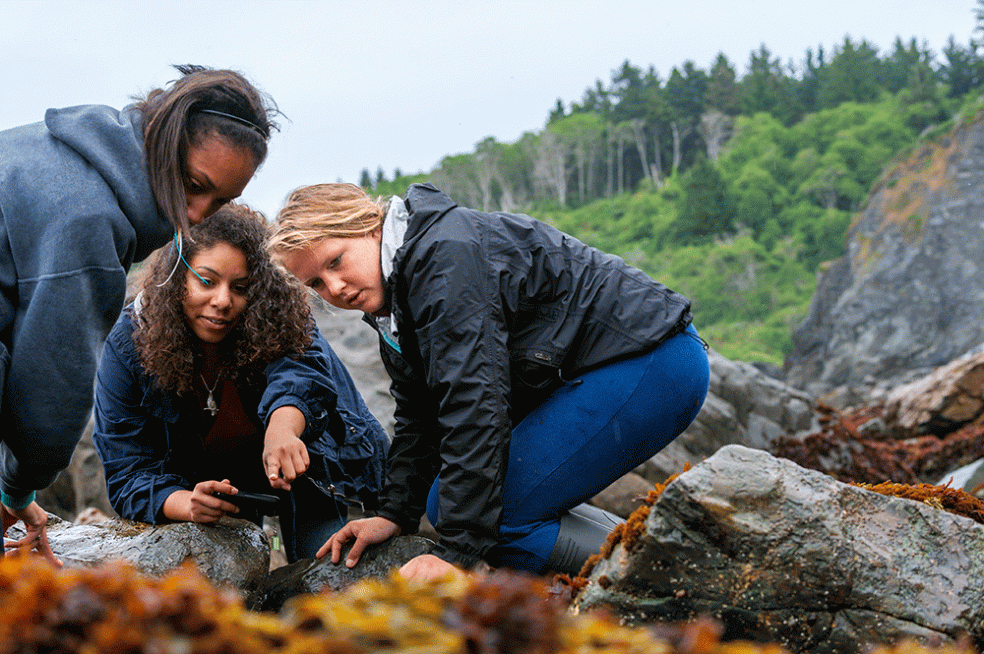
On a foggy August afternoon in Trinidad, nearly two dozen students gathered on the beach to learn about local marine life, and how to use a seine net.After a brief demonstration, the students slipped on waders and sauntered into the water to deploy the net. They drew the ends of the net together before they brought it to shore. As they sifted through the debris they’d caught, they spotted various types of seaweed and jellyfish—some the size of dinner plates, and others, like moon jellies, that fit in the palm of one’s hand.
The students were participating in the Rising Tides Place-Based Learning Community. This year-long program brings together first-year marine science majors for courses and activities focused on the cultures and ecosystems of Humboldt and Trinidad bays in Humboldt County.
Included in this cohort are first-year Marine Biology majors. The major is one of 10 new programs the University launched this fall. Programs such as these align with the state and University’s goals to address climate resilience, and prepare students in STEM fields.
Combating climate change is what motivated Gabriela Wilkison to pursue a degree in Marine Biology.
Research shows that if greenhouse gas emissions continue as is, a large portion of marine life will be at risk of extinction, Wilkison explains. “I'm wanting to be part of the team that provides a safety net for those species.”
Like many others, she was drawn to Northern California for its biodiversity and natural beauty. But she came to Humboldt because of the University’s location along the coast, giving her unfettered access to a diversity of marine habitats, and the ability to study alongside researchers at the Cal Poly Humboldt Telonicher Marine Lab. The facility is steps away from beaches, intertidal zones, and subtidal kelp beds. It hosts a seawater system that pumps water in from the ocean, and a wet lab for rearing and researching marine invertebrates and fish. Here undergraduates students can work directly with researchers and marine life.
Students also have access to a 90-foot research vessel, the Coral Sea. Onboard the vessel, students can analyze marine plant and animal life and water samples collected from the ocean.
“That's what we're all about here at Humboldt: hands-on direct experience,” says Sean Craig, Zoology and Marine Biology professor.
Experiences like these prepare students for a wide variety of careers at governmental and nongovernmental agencies, as conservationists, and for graduate school.
The Marine Biology program is a natural fit for Humboldt because of the University’s location, facilities, faculty expertise, and opportunities for students to work directly with faculty and staff, says Craig.
“We're one of the very few institutions along the entire West Coast with a marine lab where students can take classes, get their hands wet, dip their hands in the tanks, and conduct experiments as part of their undergraduate degree,” says Craig.
Marine Biology students are currently involved in a number of different projects, including the University’s kelp farm—California’s first open-water seaweed farm. The project hopes to restore the West Coast’s declining kelp populations. Kelp is a keystone species with significant impacts on ocean habitats, and can help store carbon to effectively combat climate change.
“We can have students and faculty measuring temperature changes in the ocean, looking at changes in the abundance of kelp beds, studying what kinds of natural factors might help those kelp beds to recover, and then making a difference,” Craig says. “Because that's what Humboldt is all about in terms of trying to get those populations conserved or even to come back.”
“We can face climate change together,” he says.